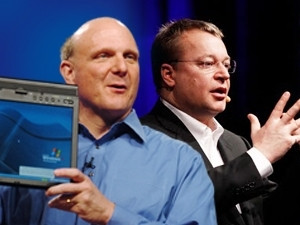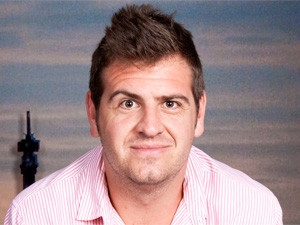
Microsoft's unsurprising move to buy Nokia's device unit, for EUR5.44 billion, gives impetus to the software company's flagging mobility strategy, while helping Nokia out of its lacklustre smartphone situation.
Microsoft wants to use the unit to accelerate the growth of its market share and profit in mobile devices through faster innovation, increased synergies, and unified branding and marketing. For Nokia, the deal is expected to significantly add to earnings, strengthen its financial position, and provide a solid basis for future investment in its three continuing businesses.
The software company, which is going through a change of leadership, has been criticised for being married to its legacy, and failing to capitalise on the shift to mobility.
Meanwhile, the handset company (which dates its existence back almost 150 years) has been under pressure as it has seemed to lag in innovation, and is no longer the darling of the mobile world. Overall, it had 14.1% of the mobile market, behind Samsung, as of the end of the second quarter, according to the IDC.
Makes sense
Vestact analyst Sasha Naryshkine says the move is not surprising, while Arthur Goldstuck, MD of World Wide Worx, says "they don't have a choice, really". Mike Sharman, owner of digital communications agency Retroviral, says the deal is a solution to Nokia's pending cash issues, although it is a little late.
Sharman adds that Microsoft will benefit from access to Nokia's technology and patents, and the deal makes sense in terms of symbiosis.
"It's a bold step into the future - a win-win for employees, shareholders and consumers of both companies. Bringing these great teams together will accelerate Microsoft's share and profits in phones, and strengthen the overall opportunities for both Microsoft and our partners across our entire family of devices and services," says Microsoft's outgoing CEO, Steve Ballmer.
"Nokia brings proven capability and talent in critical areas such as hardware design and engineering, supply chain and manufacturing management, and hardware sales, marketing and distribution," says Ballmer.
As part of the change, Stephen Elop will step aside as Nokia CEO to become Nokia executive VP of devices and services at Microsoft. "Building on our successful partnership, we can now bring together the best of Microsoft's software engineering with the best of Nokia's product engineering, award-winning design, and global sales, marketing and manufacturing," says Elop.
"With this combination of talented people, we have the opportunity to accelerate the current momentum and cutting-edge innovation of both our smart devices and mobile phone products."
Microsoft move
Nokia will also grant Microsoft a 10-year non-exclusive licence to its patents, which can be extended to "perpetuity". Of the total sale value, EUR1.65 billion relates to the patent deal. Sharman says this points to the fact that the patents are almost more valuable than the hardware.

Around 3 200 staff will move to Microsoft as it gets the bulk of Nokia's devices and services business, its design team and production facilities; operations that generated EUR14.9 billion, or half, of Nokia's total sales for 2012.
Goldstuck says Nokia's mobile unit needed rescuing, and the merger with Microsoft will see the handsets gain traction as Microsoft's OS takes off on laptops and PCs. "Nokia is definitely a long-term play."
Nokia's low- and mid-end phones have provided it with a powerful business, but the group has not made it at the top end, where the profit is, says Goldstuck. He notes the deal is a serious hardware move for Microsoft and could be what it needs to solve its mobile dilemma.
In a way, the agreement could be Microsoft's answer to Google and Apple, both of which have their own brands, comments Goldstuck. He says the licence agreement could see the cost point of the handsets come down, increasing competition.
Naryshkine thinks Microsoft can "do it" although it will not be easy to topple Apple and Samsung off the pedestal "that is hundreds of rungs up the ladder".
Next for Nokia
Risto Siilasmaa, Nokia chairman, and now interim CEO, says this is "an important moment of reinvention and, from a position of financial strength, we can build our next chapter."
Nokia expects to "book" a gain of EUR3.2 billion; adding to its earnings. The deal should wrap up in the first quarter of 2014 as long as shareholders agree.
After the sell-off, Nokia will focus on NSN (Nokia Siemens Networks, which it has owned outright since August); Here, a mapping and location service; and Advanced Technologies, which is in the technology development and licensing space. It will keep its headquarters in Finland and will have staff of around 24 000.
Nokia's board is evaluating strategies between its three remaining businesses, including possible synergies. Goldstuck says NSN is the crown in its jewel and is highly profitable.
"Today is an important moment of change and reinvention for Nokia and its employees," says Siilasmaa. "With our strong corporate identity, leading assets and talent, and from a position of renewed financial strength, we will build Nokia's next chapter."
Nokia also expects to gain financially from the deal, boosting its net cash reserves from the EUR4.1 billion it ended the second quarter with, to EUR7.8 billion; assuming the agreement had been wrapped up during the quarter.
Losing out
Naryshkine points out that Nokia is a shadow of its former self. "The stock is down 84% in five years as the company lost handset dominance to a wave of newer smartphones that left the Finnish company... well, finished?"
The company has come under some flak from the market: Standard & Poor's has dropped Nokia's rating to the level below junk and is now characterising it as "highly-speculative". Moody's has Nokia at the last notch before "highly-speculative", but warns it could be further downgraded, and Fitch is at the same rating.

Naryshkine says while Nokia may have lost dominance over the past five years, it still sold 53.7 million phones in the last quarter. However, he notes it is not about numbers, but profitability. "Nokia used to chop down trees and produce paper; this is probably just another chapter."
In Nokia's second fiscal quarter, it sold 7.4 million smartphones, a 27% year-on-year drop. Its mobile phone sales, at 53.7 million units, also fell 27% from the same period in 2012.
In February 2011, Nokia migrated operating systems from Symbian to Windows Phone.
In the second quarter of this year, according to the IDC, the Windows Phone OS posted the largest year-over-year increase among the top five smartphone platforms and reinforced its position as the number three smartphone operating system.
"Driving this result was Nokia, which released two new smartphones and grew its presence at multiple mobile operators. But beyond Nokia, Windows Phone remained a secondary option for other vendors, many of which have concentrated on Android," says IDC.
Timeline:
1865: Mining engineer Fredrik Idestam sets up his first wood pulp mill at the Tammerkoski Rapids in south-western Finland, with a second a few years later on the banks of the Nokianvirta river, which inspires him to name his company Nokia Ab in 1871.
1898: Eduard Pol'on founds Finnish Rubber Works, which later becomes Nokia's rubber business, making everything from galoshes to tyres.
1912: Arvid Wickstr"om sets up Finnish Cable Works, the foundation of Nokia's cable and electronics business. In 1962, it makes its first electronic device in-house: a pulse analyser for use in nuclear power plants.
1963: Cable Works starts developing radio telephones for the army and emergency services - Nokia's first foray into telecommunications.
1979: Joint venture company Mobira Oy is launched in conjunction with Finnish TV maker Salora.
1981: The launch of the Nordic Mobile Telephone service, the world's first international cellular network and the first to allow international roaming.
1982: Nokia introduces the first car phone - the Mobira Senator - to the network.
1984: The Mobira Talkman portable car phone is launched, followed by the first handheld phone three years later.
1987: GSM (Global System for Mobile communications) is adopted as the European standard for digital mobile technology.
1 July 1991: Finnish prime minister Harri Holkeri makes the world's first GSM call, using Nokia equipment. A year later, its first digital handheld GSM phone, the Nokia 1011, is launched.
1992: Nokia starts to sell off its rubber, cable and consumer electronics divisions.
1994: The 2100 range is launched, the first feature phones to feature the Nokia Tune ringtone. The tones are based on Gran Vals, a classical guitar piece composed by Francisco Tarrega in the 19th century. The 2100 series sells more than 20 million phones globally, after an initial target of 400 000.
1998: Nokia is the world leader in mobile phones.
1999: The Nokia 7110 is launched. It is capable of rudimentary Web-based functions, including e-mail.
2001: Nokia launches its first phone with a built-in camera.
2002: The group launches its first 3G phone.
2005: Nokia sells its billionth phone - a Nokia 1100 - in Nigeria, and global mobile phone subscriptions pass two billion.
2010: Nokia falls off the top of the leader board, appoints Stephen Elop as president and CEO, and starts with a rethink.
February 2011: Nokia joins forces with Microsoft to strengthen its position in the smartphone market and starts adopting the new Windows Phone 7 operating system, with the Symbian platform gradually being side-lined.
October 2011: Launches its first Nokia with Windows Phone, the Nokia Lumia 800 and the Nokia Lumia 710.
2013: It has a full portfolio of Windows Phone 8 smartphones, from the Lumia 520 through the flagship Lumia 920.
(Source for timeline: Nokia)
Share